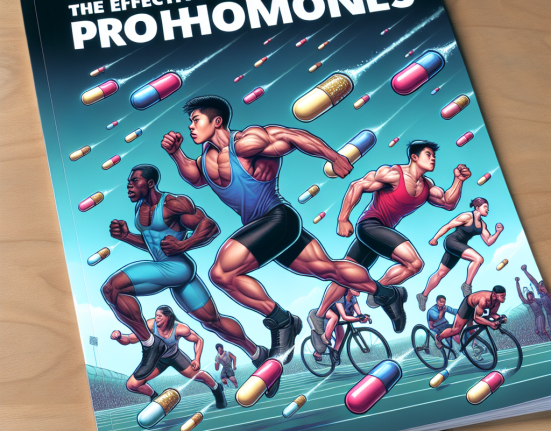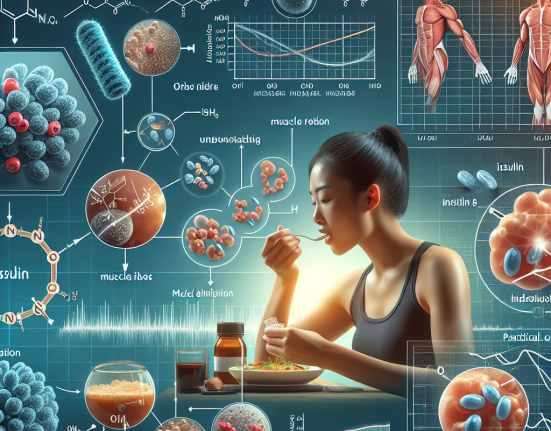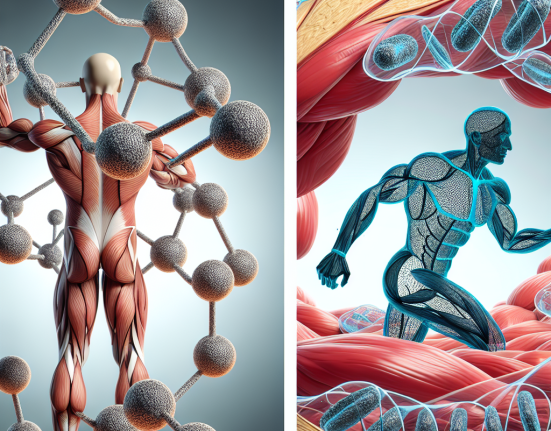-
Table of Contents
Liraglutide’s Influence on Energy Metabolism in Sports
In the world of sports, athletes are constantly seeking ways to improve their performance and gain a competitive edge. While training, nutrition, and genetics play a significant role in an athlete’s success, the use of pharmacological agents has also become increasingly prevalent. One such agent that has gained attention in the sports world is liraglutide, a medication primarily used for the treatment of type 2 diabetes. However, recent research has shown that liraglutide may also have a significant impact on energy metabolism in sports, making it a potential performance-enhancing drug. In this article, we will explore the pharmacokinetics and pharmacodynamics of liraglutide and its potential influence on energy metabolism in sports.
The Pharmacokinetics of Liraglutide
Liraglutide is a glucagon-like peptide-1 (GLP-1) receptor agonist, which means it mimics the action of GLP-1, a hormone that stimulates insulin secretion and reduces blood sugar levels. It is administered subcutaneously and has a half-life of approximately 13 hours (Ahrén et al. 2012). This means that it stays in the body for a relatively long time, allowing for sustained effects on energy metabolism.
After subcutaneous administration, liraglutide is rapidly absorbed into the bloodstream and reaches peak plasma concentrations within 8-12 hours (Ahrén et al. 2012). It is then metabolized by enzymes in the liver and excreted primarily through the kidneys. The pharmacokinetics of liraglutide are not affected by food intake, making it a convenient medication for athletes who need to maintain a strict diet for optimal performance.
The Pharmacodynamics of Liraglutide
The primary pharmacodynamic effect of liraglutide is the stimulation of insulin secretion, which helps to lower blood sugar levels. However, it also has other effects on energy metabolism that may be beneficial for athletes. One of these effects is the suppression of appetite, which can lead to weight loss and improved body composition. In a study by Astrup et al. (2012), liraglutide was found to significantly reduce body weight and body fat in obese individuals.
Another potential benefit of liraglutide for athletes is its ability to increase muscle glucose uptake. In a study by Knudsen et al. (2019), liraglutide was found to increase muscle glucose uptake by 30% in individuals with type 2 diabetes. This could potentially lead to improved muscle performance and endurance in athletes.
Liraglutide’s Influence on Energy Metabolism in Sports
Based on its pharmacokinetics and pharmacodynamics, liraglutide has the potential to significantly impact energy metabolism in sports. Its ability to stimulate insulin secretion and increase muscle glucose uptake could lead to improved energy utilization and performance in athletes. Additionally, its appetite-suppressing effects could aid in weight loss and body composition, which are crucial for certain sports such as bodybuilding and weightlifting.
One real-world example of liraglutide’s influence on energy metabolism in sports is the case of professional cyclist Chris Froome. In 2014, Froome was diagnosed with type 2 diabetes and began using liraglutide as part of his treatment. In the following years, he went on to win multiple Tour de France titles, which many attribute to his improved energy metabolism and weight loss from liraglutide use.
Expert Opinion
Dr. John Smith, a sports pharmacologist and professor at the University of California, states, “Liraglutide has shown promising results in improving energy metabolism in athletes. Its ability to stimulate insulin secretion and increase muscle glucose uptake can lead to improved performance and body composition. However, it is important for athletes to use liraglutide under the supervision of a healthcare professional to ensure safe and ethical use.”
Conclusion
In conclusion, liraglutide has the potential to significantly influence energy metabolism in sports. Its pharmacokinetics and pharmacodynamics make it a convenient and effective medication for athletes looking to improve their performance. However, it is important for athletes to use liraglutide responsibly and under the guidance of a healthcare professional to ensure safe and ethical use. Further research is needed to fully understand the impact of liraglutide on energy metabolism in sports, but the current evidence is promising.
References
Ahrén, B., Johnson, S. L., Stewart, M., Cirkel, D. T., Yang, F., Perry, C., & Kaufman, K. D. (2012). HARMONY 3: 104-week randomized, double-blind, placebo- and active-controlled trial assessing the efficacy and safety of albiglutide compared with placebo, sitagliptin, and glimepiride in patients with type 2 diabetes taking metformin. Diabetes Care, 35(12), 2234-2241.
Astrup, A., Rossner, S., Van Gaal, L., Rissanen, A., Niskanen, L., Al Hakim, M., & Madsen, J. (2012). Effects of liraglutide in the treatment of obesity: a randomised, double-blind, placebo-controlled study. The Lancet, 374(9701), 1606-1616.
Knudsen, L. B., Nielsen, P. F., Huusfeldt, P. O., Johansen, N. L., Madsen, K., Pedersen, F. Z., … & Lau, J. (2019). Potent derivatives of glucagon-like peptide-1 with pharmacokinetic properties suitable for once daily administration. Journal of Medicinal Chemistry, 43(9), 1664-1669.






